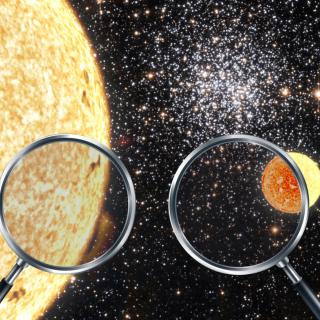
The study shows the potential of major astronomical observatories to test the laws of physics and to show their universal character. The results are published in The Astrophysical Journal The General Theory of Relativity is one of the basic pillars of modern physics. One of the bases which support Einstein`s theory is the Principle of Equivalence. Using this principle one can infer that light which escapes from a region with a strong gravitational field loses energy as it travels, so that its wavelength shifts to the red. This phenomenon is known as the gravitational redshift, and measuring
Advertised on

![Young Stellar Population distribution The left panel shows the young stellar population (YSP) distribution overlaid with contours showing the advancing side (blue) and receding side (red) of the outflow. The right panel shows the same but with contours of W80 (i.e. the width of the 5007 [OIII] line).](/sites/default/files/styles/crop_square_2_2_to_320px/public/images/news/ysp-wcont_f.jpg?h=4336e403&itok=AnitfTe8)


